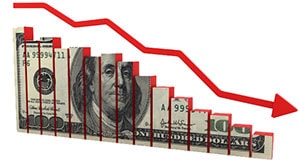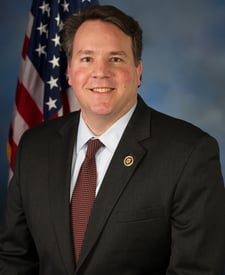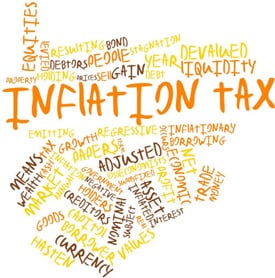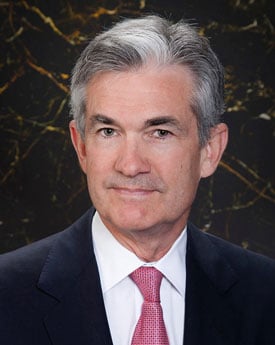The prospect of Federal Reserve rate hikes continues to rattle Wall Street and cloud the outlook for precious metals. On Wednesday, the central bank strongly signaled it will raise its benchmark Fed funds rate for the first time in three years – likely at its March policy meeting. Policymakers noted that inflation is running “well above” target and also claimed a “strong labor market” justifies a degree of monetary tightening. “There’s quite a bit of room to raise interests without threatening the labor market,” Fed chairman Jerome Powell said, adding, “wages are moving up at the highest pace they have in decades.” FACT CHECK: Mostly False! Price inflation overall is moving up at the highest pace in decades. Wages have certainly been rising in nominal terms as
Topics:
Stefan Gleason considers the following as important: 6a.) Gold Standard, 6a) Gold & Monetary Metals, Featured, newsletter
This could be interesting, too:
Nachrichten Ticker - www.finanzen.ch writes Die Performance der Kryptowährungen in KW 9: Das hat sich bei Bitcoin, Ether & Co. getan
Nachrichten Ticker - www.finanzen.ch writes Wer verbirgt sich hinter der Ethereum-Technologie?
Martin Hartmann writes Eine Analyse nach den Lehren von Milton Friedman
Marc Chandler writes March 2025 Monthly
The prospect of Federal Reserve rate hikes continues to rattle Wall Street and cloud the outlook for precious metals.
On Wednesday, the central bank strongly signaled it will raise its benchmark Fed funds rate for the first time in three years – likely at its March policy meeting.
Policymakers noted that inflation is running “well above” target and also claimed a “strong labor market” justifies a degree of monetary tightening.
“There’s quite a bit of room to raise interests without threatening the labor market,” Fed chairman Jerome Powell said, adding, “wages are moving up at the highest pace they have in decades.”
FACT CHECK: Mostly False!
Price inflation overall is moving up at the highest pace in decades. Wages have certainly been rising in nominal terms as well, along with everything else in the economy that is susceptible to inflation pressures.
In real terms, though, wages are lagging behind. The Labor Department reported earlier this month that average hourly earnings for all employees decreased 2.4% on an annual basis through December when adjusting for purchasing power.

In other words, wages aren’t keeping up with inflation – even when measured by the government’s jury-rigged Consumer Price Index, now running at a 7% clip.
Officials in Washington who insist things are looking up in the economy just don’t get it (or, in many cases, are deliberately misleading).
Ordinary Americans, however, do get it. They know they are losing out to inflation.
In fact, 61% of Americans say their family incomes are falling behind their costs of living, according to an NBC News poll. Only 7% say their incomes are rising faster than inflation.
Moreover, 72% of Americans say the country is headed in the wrong direction. That’s one of the gloomiest social mood readings ever recorded in the history of such polling.
The small group of elites who are prospering is starting to grow restless as well amid the recent sharp downturn in stocks.
Some investors had hoped the recent bout of stock market selling would prompt the Fed to strike a more dovish tone. In recent years, Wall Street tantrums have caused the central bank to back off on tightening and unleash more stimulus.
But the gap between inflation and the Fed funds rate is currently the largest on record. Central bankers would lose whatever “inflation fighting” credibility they still have left were they not to start rate hikes this year.
But a single rate hike – or even several rate hikes – would not entail a fundamental departure from loose monetary policy. Officials would have to be willing to hike nominal rates over and above the inflation rate (7%+) in order to be “tight” in any meaningful sense.
Neither Wall Street investment banks nor Washington, D.C. politicians would stand for having their borrowing costs jacked up to 7% at this time.
The elites would stage a monetary coup to restore loose money were the Fed to stop doing their bidding.
But it won’t come down to that, of course.
The Fed will do whatever it takes to please its banking clients and shareholders – even if that means suppressing interest rates in perpetuity, buying up trillions of dollars in government and corporate bonds, and ultimately wrecking the value of the currency.
Savvy investors are positioning themselves for the unintended consequences to come.
For some time, the stock market has been the primary beneficiary of the Fed’s excess currency creation. But there are growing signs that this year will mark a major inflection point.
First the high-flying innovation-themed stocks broke down into bear markets.
Then the small capitalization Russell 2000 stocks erased all their gains from last year.
Next the S&P 500 and Dow Jones Industrials could go from correction to collapse when measured against real assets such as gold.
Although gold and silver have yet to post big gains in this environment, they are significantly outperforming the stock market so far this year.
This nascent trend may have legs against a backdrop of high inflation and deeply negative social mood. Combined with persistently negative real interest rates, it’s a nearly ideal scenario for a major precious metals bull market to play out.
Although there are potential roadblocks ahead for gold and silver investors, the Fed is unlikely to be one of them anytime soon. History shows the early stages of a Fed-hiking campaign tend to be favorable for precious metals price appreciation.
The bottom line is that investors who are well positioned in hard assets shouldn’t fear the Fed. Those who cling exclusively to dollar-denominated financial assets, though, should be very afraid.
Tags: Featured,newsletter








